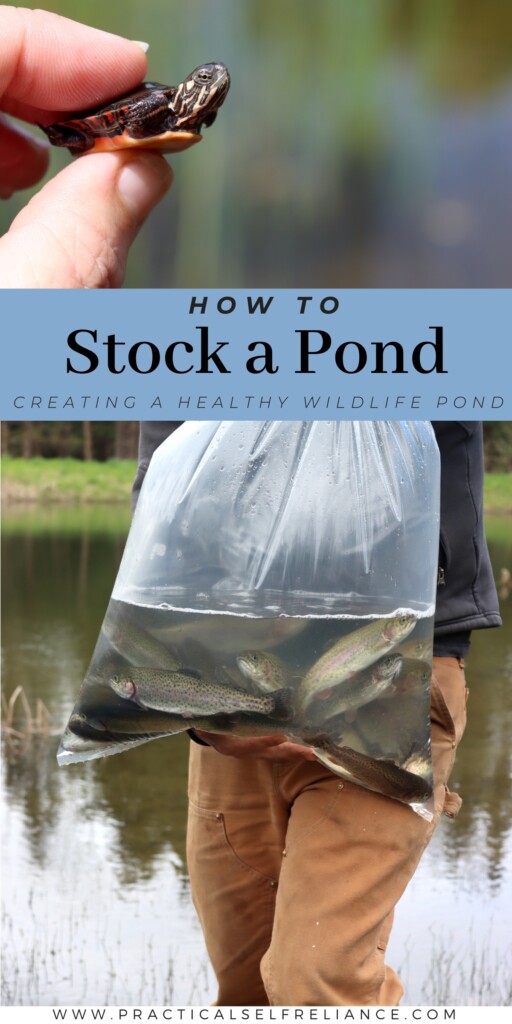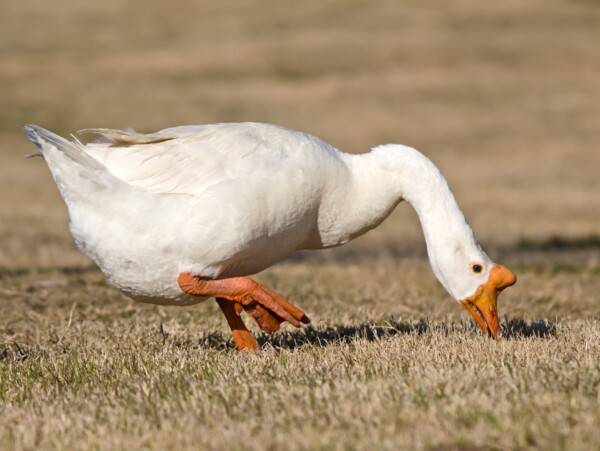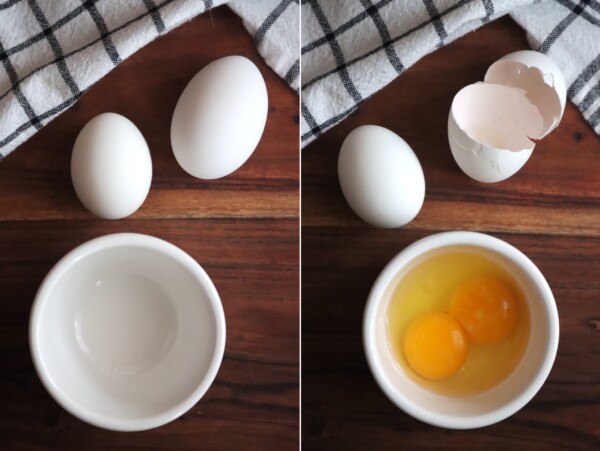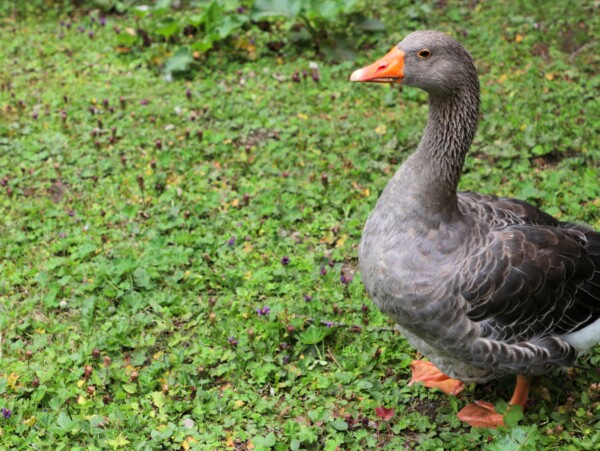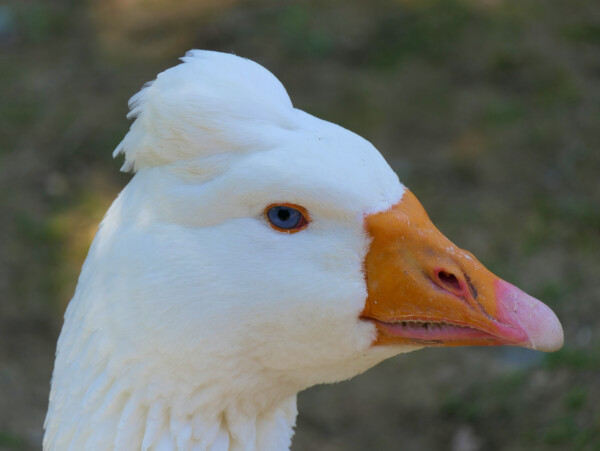Affiliate disclosure: This post may contain affiliate links. Please see our Privacy Policy.
Stocking a pond on a small homestead is about more than just adding fish — it’s about creating a thriving ecosystem that provides food, supports local wildlife, and helps control pests naturally. With the right approach, your pond can become a self-sustaining resource for fresh fish, natural beauty, and improved land stewardship. A little planning now will yield years of benefits for both you and your homestead environment.
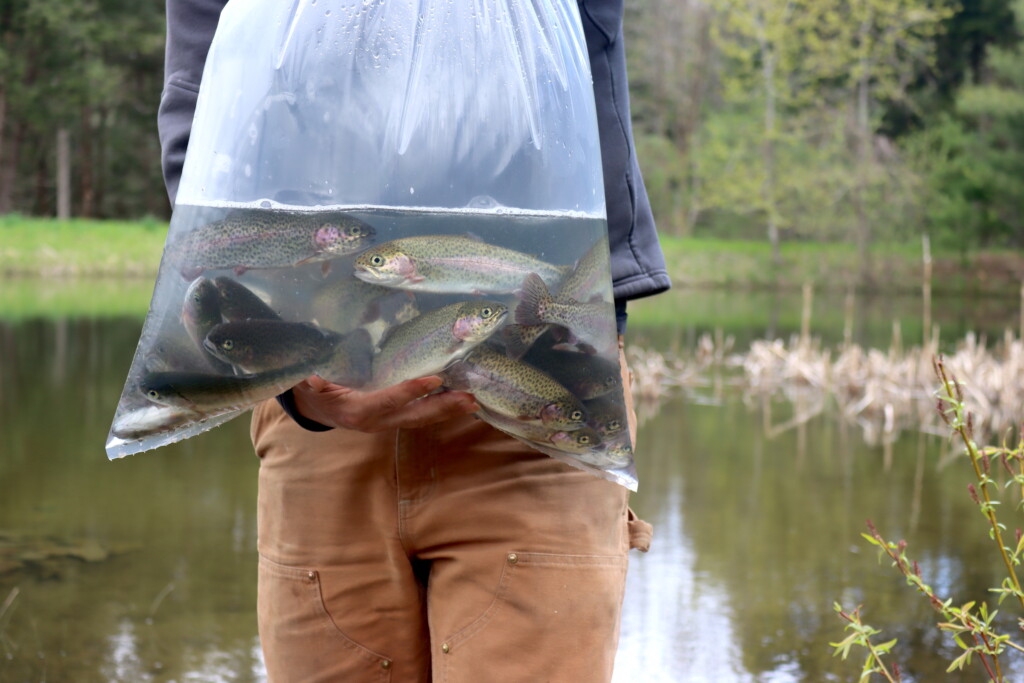
A small pond can be one of the most valuable features on a homestead. Beyond its natural beauty, a well-stocked pond provides a steady source of fresh fish for the table, supports local wildlife, and helps control unwanted pests like mosquitoes and leeches. By stocking the right fish species in the right way, you can create a self-sustaining ecosystem that requires minimal upkeep but offers lasting rewards.
Whether you’re hoping to harvest a few catfish for dinner, attract frogs and waterfowl, or cut down on biting insects around your home, thoughtful pond stocking is the foundation. In this guide, we’ll walk through everything you need to know to stock a homestead pond for food, habitat, and natural balance.
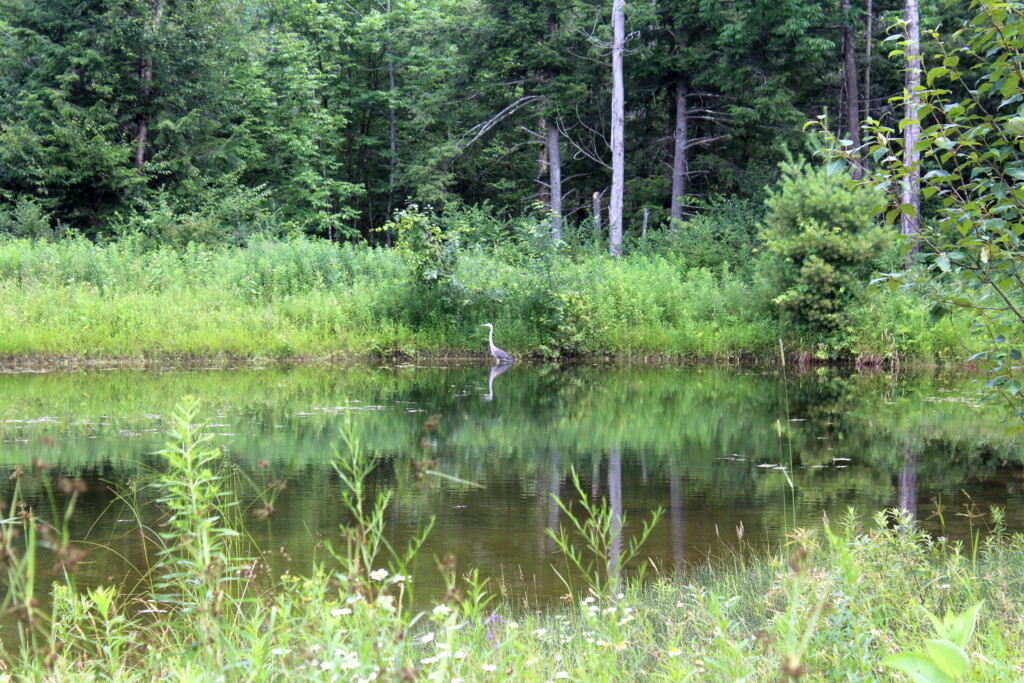
Assess Your Pond First
Before adding any fish, it’s important to evaluate the pond itself. Key factors include:
- Pond size and depth: Larger ponds can support more species diversity and bigger fish populations. Ideally, a fishing pond should be at least 8–10 feet deep in some areas to provide refuge during hot summers and cold winters.
- Water quality: Test for pH, oxygen levels, and nutrient balance. Poor water quality can lead to fish kills and algae problems. Ponds with heavy nutrient runoff from farms or lawns may need aeration or corrective action before stocking. (This simple test kit has everything you need.)
- Habitat and cover: Healthy ponds have aquatic vegetation, submerged brush, or manmade structures like fish habitats to offer shelter and breeding grounds.
Address any major problems—like excessive siltation, poor oxygenation, or unwanted vegetation—before introducing fish.
Many ponds benefit from Pond Muck Remover tablets, which are natural probiotics and enzymes that help break down muck at the bottom of a pond to improve water quality. Pond clarifiers can also help if your water is especially cloudy.
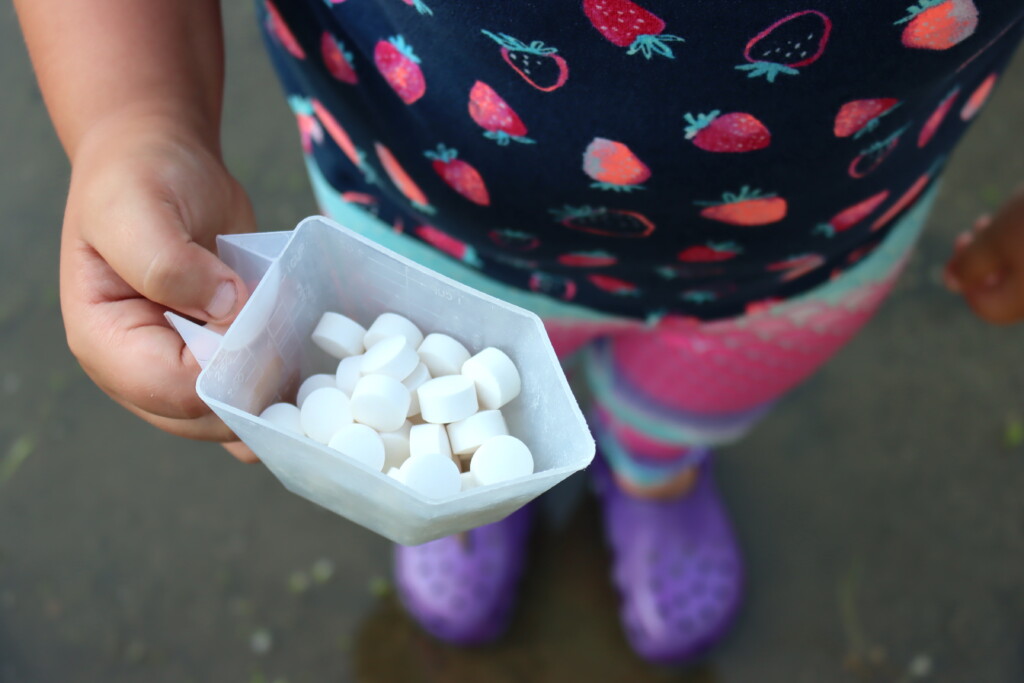
Where to Buy Fish for Your Pond
Sourcing healthy fish is key to successful pond stocking. Fortunately, many hatcheries specialize in pond fish and offer shipping options for common species like bluegill, largemouth bass, channel catfish, and forage fish such as fathead minnows. These species are hardy enough to be transported safely in oxygenated bags and shipped directly to your property.
However, some fish, especially cold-water species like trout, typically aren’t shipped long distances. Trout require colder water and higher oxygen levels during transport, which makes shipping impractical in most cases. Instead, trout must usually be picked up directly from a local hatchery or coordinated through regional fish stocking programs.
Before ordering, be sure to check local regulations, as some areas require permits for certain species or may have restrictions on stocking.
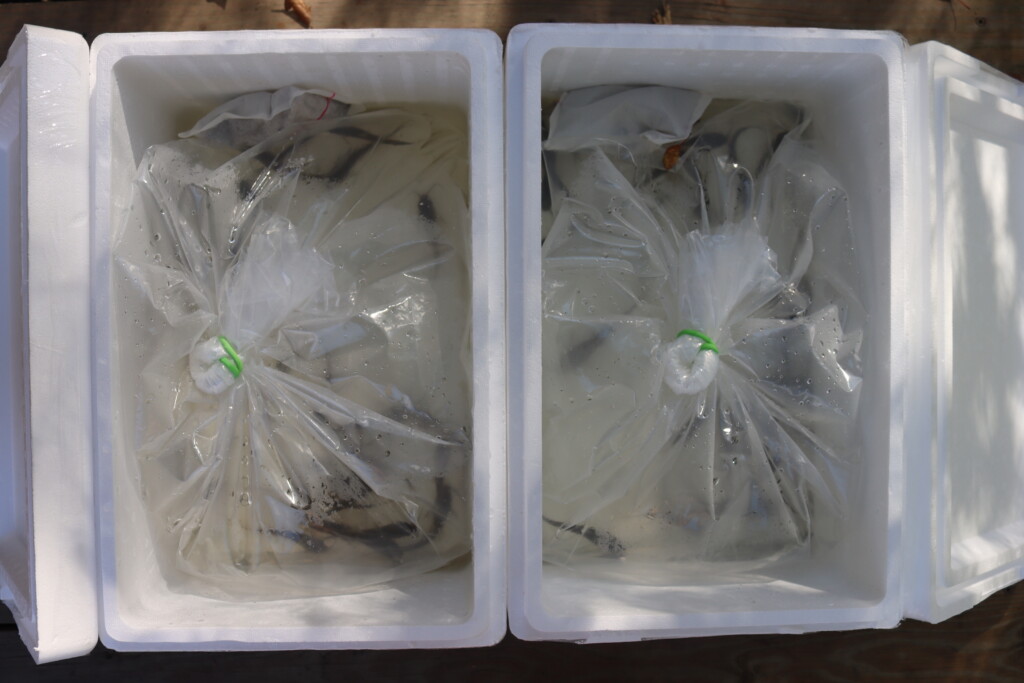
Choose the Right Fish Species
The best fish to stock depends on your goals: are you after recreational fishing, natural mosquito control, or a self-sustaining ecosystem? Some common pond stocking combinations include:
- Bass-Bluegill-Catfish: This classic trio works well for sport fishing. Bass control bluegill populations, and catfish help clean the pond bottom.
- Trout ponds: In cooler climates, ponds can be stocked with rainbow, brook, or brown trout. However, trout require colder, oxygen-rich water.
- Forage species: Small prey fish like fathead minnows, shiners, or golden shiners help support a healthy predator fish population.
- Non-Fish Species: Beyond fish, there are a number of other native species that can increase the biodiversity and ecosystem health in your pond. Look into native non-invasive snail, turtle and crayfish species.
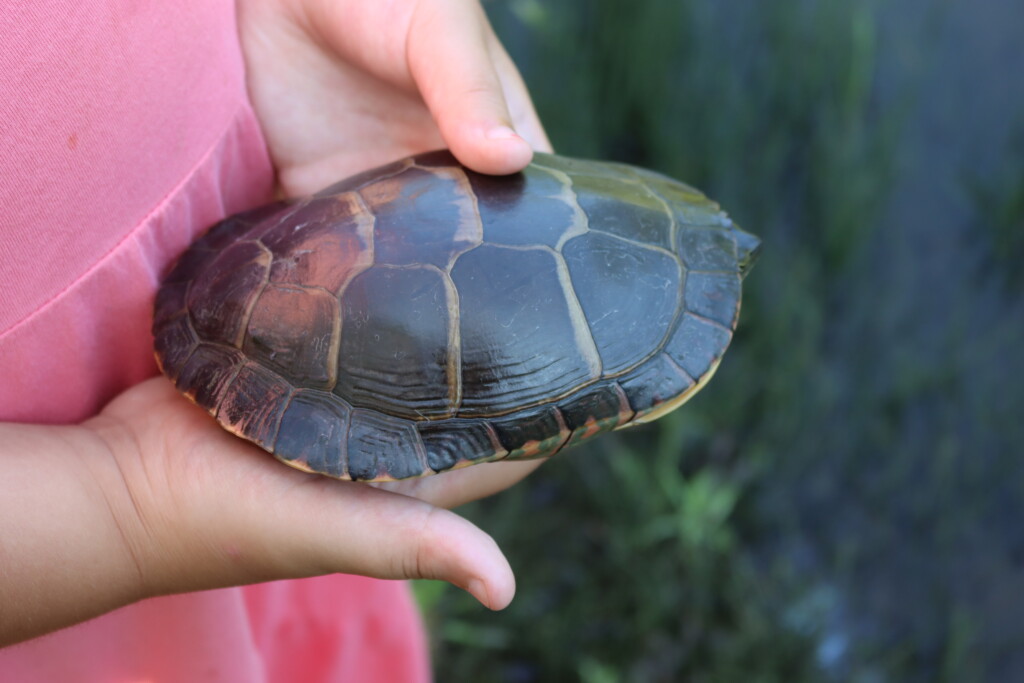
You’ll also want to consider the region and climate. Some species, like largemouth bass, are heat-tolerant, while others, like trout, need cooler waters.
Avoid adding aggressive, fast-breeding fish like crappie to small ponds, unless you are prepared to manage them carefully. Similarly, introducing non-native species can create ecological imbalances.
Pond Stocking Tip
Always plan to stock your fish early in the morning or late in the evening when temperatures are cooler. Lower stress during release helps improve fish survival rates and gives them a better start in your pond.
Fish Species Requirements for Pond Stocking
Each fish species has its own needs when it comes to water quality, habitat, and food sources. Matching your pond conditions to the right species—and understanding their requirements—will greatly increase your chances of success.
Here’s a look at the most commonly stocked pond fish and what they need to thrive:
Largemouth Bass
Largemouth bass are a top predator and a favorite for sport fishing. They require:
- Water Temperature: Prefer 65–85°F; tolerate warmer waters better than many species.
- Habitat: Need plenty of cover such as submerged logs, vegetation, and brush piles for ambushing prey.
- Diet: Feed on bluegill, minnows, frogs, and even small ducks. A healthy forage fish population is critical for bass growth.
- Stocking Tips: Introduce bass after forage fish have established for at least one season.
Bluegill (and Hybrid Bluegill)
Bluegill are essential forage fish for supporting bass populations and offer great panfishing themselves.
- Water Temperature: Thrive in 60–80°F waters.
- Habitat: Prefer shallow, weedy areas for nesting and hiding.
- Diet: Insects, zooplankton, and smaller invertebrates.
- Stocking Tips: Stock at high densities (500–1,000 per acre) to ensure a strong food base for predators. They’re especially known for controlling leech populations, and though they ship small, at only 1-2 inches each, they grow quickly.
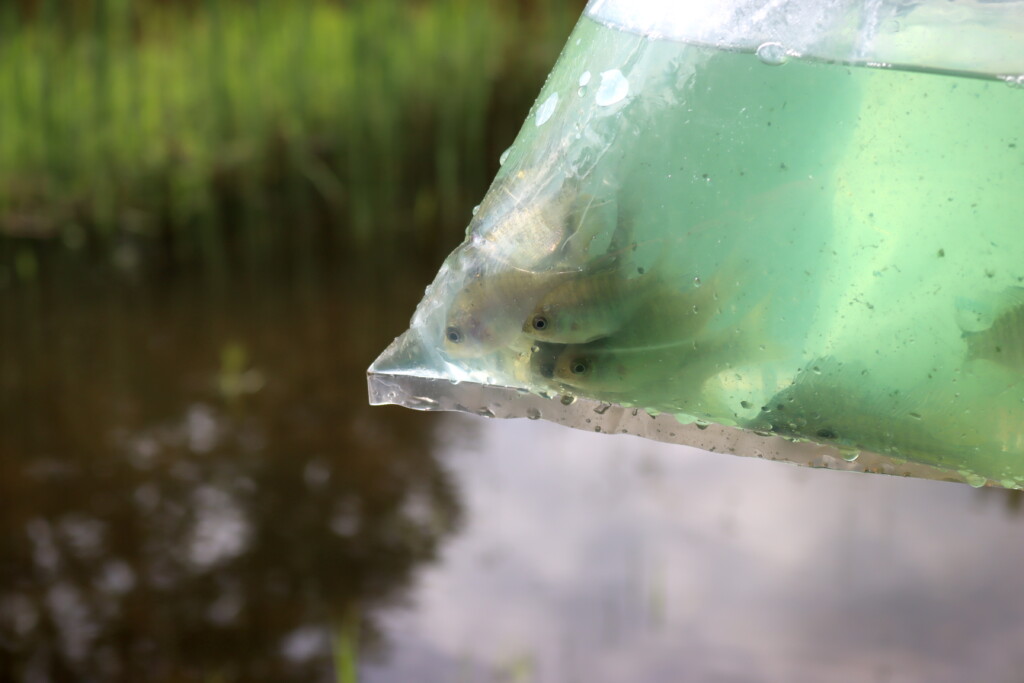
Channel Catfish
Channel catfish are hardy bottom feeders that add diversity to a pond.
- Water Temperature: Prefer 75–85°F, but tolerate a wide range.
- Habitat: Need deeper water (8+ feet) and benefit from underwater structures like rock piles or PVC habitats.
- Diet: Opportunistic feeders; eat insects, fish, and commercial fish pellets if supplemental feeding is provided.
- Stocking Tips: Can be stocked alongside bass and bluegill without upsetting predator-prey balance.
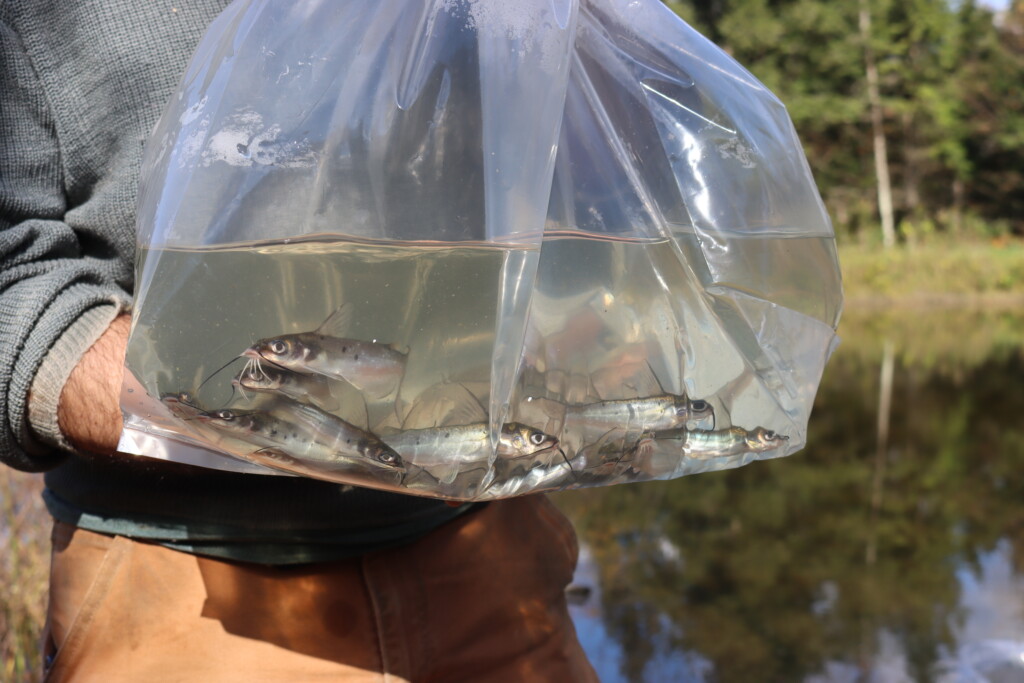
Fathead Minnows
These small baitfish are often the first species added to new ponds.
- Water Temperature: Ideal between 50–75°F.
- Habitat: Spawn readily in shallow water with submerged structures like boards or brush.
- Diet: Feed on plankton, detritus, and small invertebrates.
- Stocking Tips: Stock heavily (5–10 pounds per acre) before introducing any predators.
Rainbow Trout (Seasonal Stocking)
In cool climates or winter months, ponds can be stocked with trout for seasonal fishing. If your pond is large enough, and has a deep section where the trout can shelter during the summer months, you may be able to maintain a year round trout population.
- Water Temperature: Require cold water under 70°F; ideally 55–65°F.
- Habitat: Need well-oxygenated, clean water with minimal warm-water species competition.
- Diet: Eat insects, minnows, and artificial feeds.
- Stocking Tips: Best for ponds with springs, aerators, or seasonal stocking in fall and winter. Be sure to get trout out of their transport bags QUICKLY. They need high oxygen levels, and usually only make it 60 to 90 minutes in the bag. That’s one reason trout are only available for local pickup at fisheries rather than shipping.
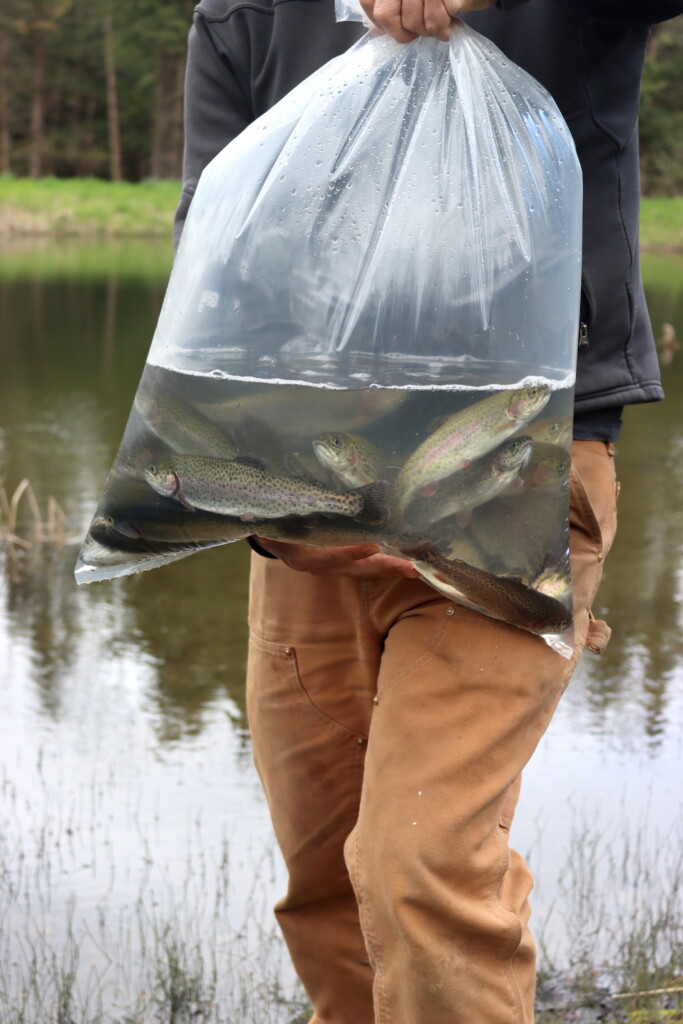
Other Pond Animals to Support a Healthy Ecosystem
While fish are the backbone of a stocked pond, adding a few other pond animals can greatly improve water quality, boost biodiversity, and support a naturally balanced ecosystem.
Species like trapdoor snails, native aquatic turtles, and native non-invasive crayfish aren’t usually stocked for food production, but they play critical roles in keeping a small homestead pond healthy and thriving.
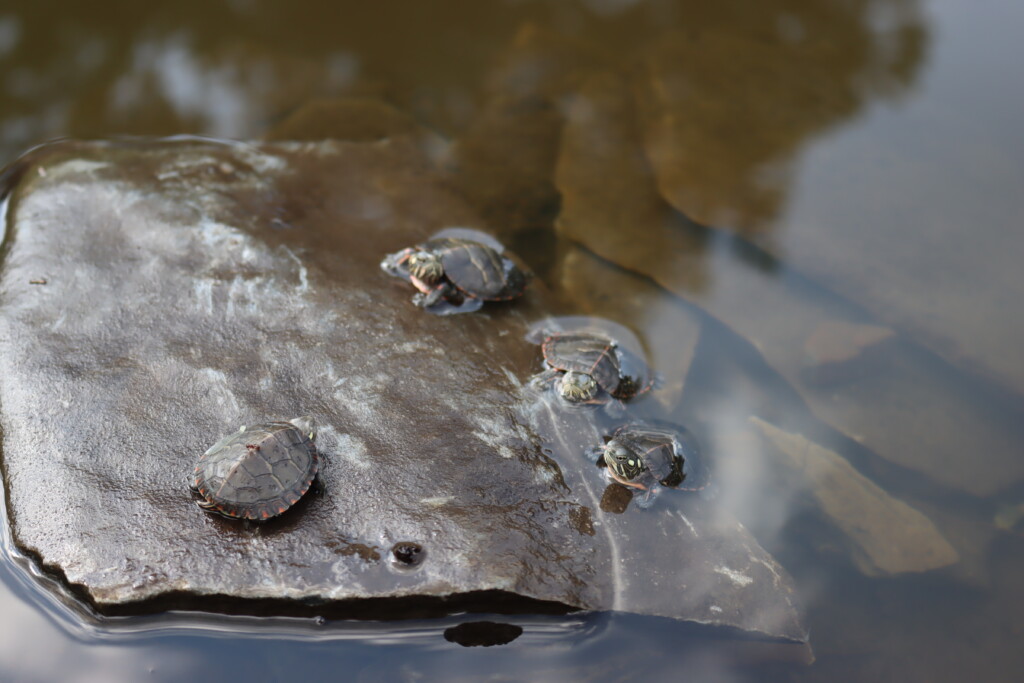
Trapdoor Snails
Trapdoor snails are one of the best-kept secrets for maintaining clean pond water. These hardy snails:
- Feed on algae, decaying plant matter, and excess fish food, helping reduce nutrient buildup that can fuel algae blooms.
- Reproduce slowly, preventing overpopulation issues common with other snail species.
- Survive cold winters by burrowing into the pond bottom.
By helping manage organic debris and improving overall water clarity, trapdoor snails act as natural pond cleaners without disrupting fish populations.
Native Aquatic Turtle Species
Native aquatic turtles are a charming and functional addition to a pond ecosystem. They:
- Feed on insects, carrion, small fish, and aquatic vegetation, helping control mosquito larvae and other nuisance species.
- Bask on logs and rocks, adding to the natural feel and visual appeal of the pond.
- Coexist peacefully with most pond fish, although they may occasionally prey on very small or injured fish.
While not a food species for most homesteads, they contribute to a healthier pond environment by keeping the invertebrate population in check. Be sure to find species native to your region!
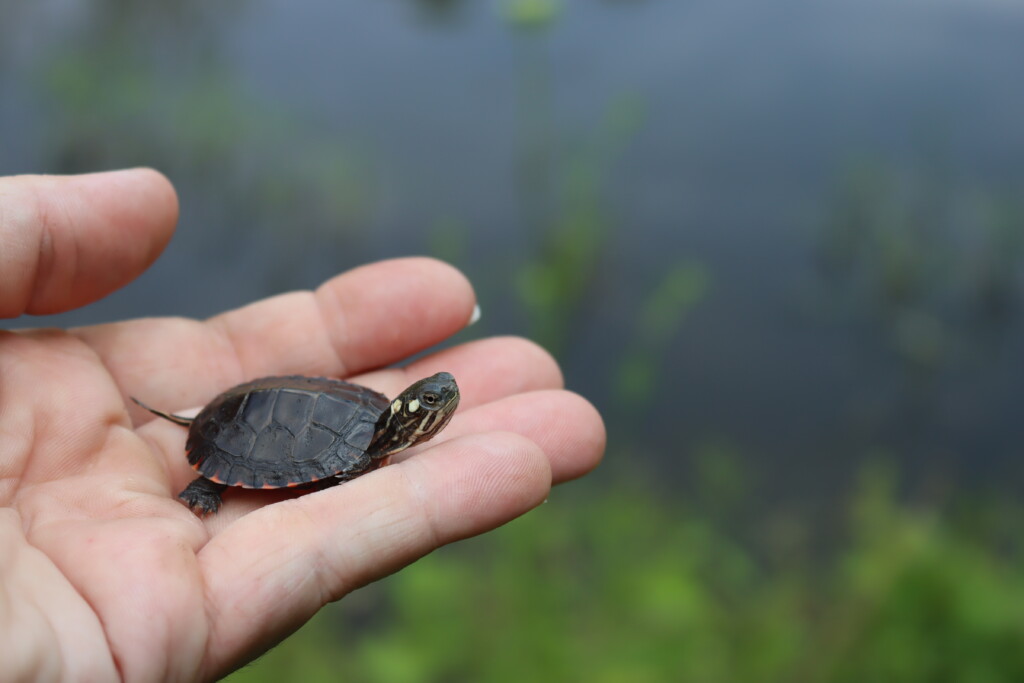
Crayfish
Crayfish are bottom-dwelling scavengers that provide multiple benefits in a pond:
- Eat detritus, dead plant matter, and small invertebrates, helping break down organic waste and prevent muck buildup.
- Serve as a natural food source for largemouth bass and other predatory fish.
- Help control leech populations by preying on leeches and other soft-bodied invertebrates hiding in pond sediments.
Some homesteaders also enjoy harvesting crayfish for the occasional meal, making them a bonus addition for food production if populations are managed carefully.
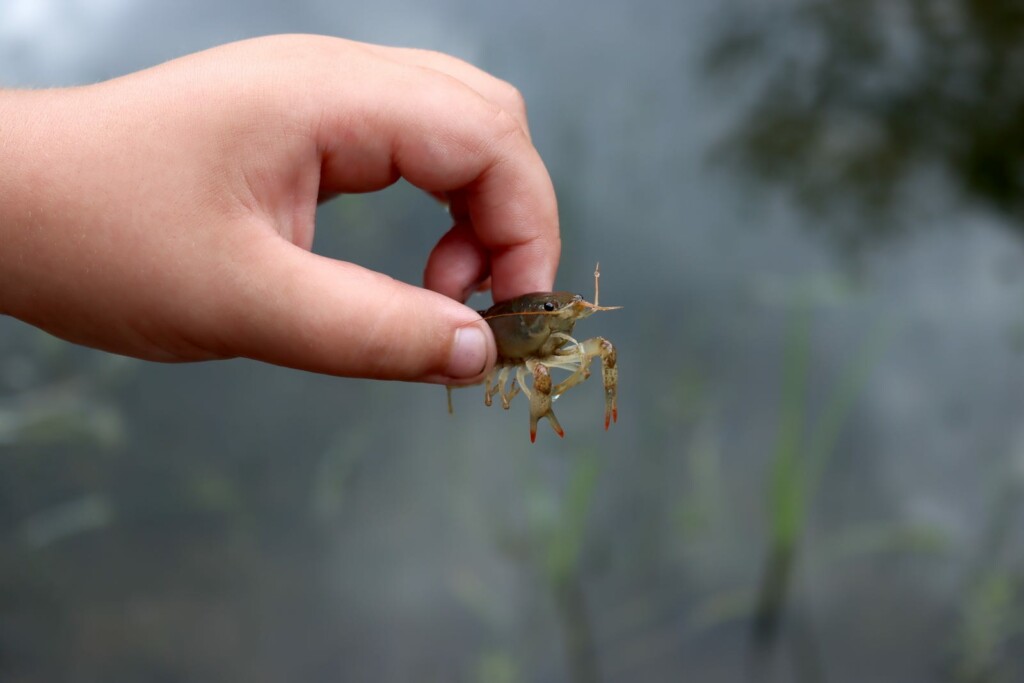
Adding a few carefully chosen non-fish species can tip the balance toward a more resilient, self-cleaning pond. They reduce maintenance needs, improve fish health indirectly, and encourage a more diverse, natural ecosystem — all while helping your pond reach its full potential.
Caution
When adding snails, crayfish, or turtles, always choose native or non-invasive species suited to your region. Some crayfish species, like rusty crayfish, can outcompete native wildlife and damage pond habitats if they escape into local waterways. Always buy from reputable sources and avoid introducing wild-caught animals unless you’re sure they’re native and healthy.
Plan a Stocking Schedule
A successful pond stocking often happens in stages:
- Year One: Introduce forage species first. Stock fathead minnows, shiners, and bluegill early in the season to give them time to establish and reproduce before predators arrive.
- Year Two: Add predator fish like largemouth bass or channel catfish. By waiting a year, you ensure plenty of available food for these fish.
Stocking rates typically vary depending on pond size and goals, but general guidelines include:
- 500–1,000 bluegill per acre
- 100 largemouth bass per acre
- 100 channel catfish per acre
- 100-200 trout per acre
Always check with local extension services or fisheries experts for regional recommendations and updated stocking rates.
Acclimate Fish Properly
When you receive fish from a hatchery, acclimation is critical to reduce stress and increase survival:
- Float the transport bags in the pond water for 15–30 minutes to equalize temperature.
- Slowly add small amounts of pond water into the bag to help the fish adjust to water chemistry differences.
- After about 30–60 minutes, gently release the fish into shallow water.
Stocking during cooler parts of the day, such as early morning or late evening, reduces stress on fish during the transition.
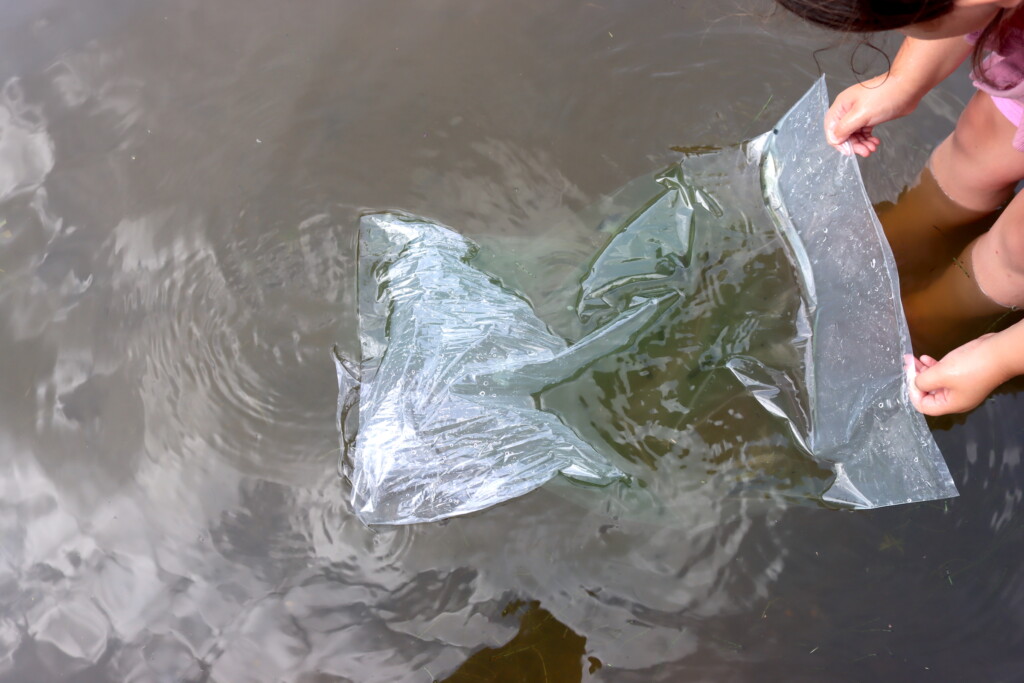
Support a Healthy Pond Ecosystem
Once stocked, a pond needs regular care to stay balanced:
- Aeration: Installing an aerator or fountain helps maintain high oxygen levels and prevents fish kills, especially in summer heat or during winter ice cover. A simple pond aeration system can make a huge difference in water quality and fish survival.
- Water quality management: Minimize fertilizer and pesticide runoff into the pond. A buffer of native plants around the pond edge helps filter nutrients naturally.
- Population control: Monitor fish populations and occasionally harvest excess fish. Overcrowding leads to stunted growth and poor water quality.
- Supplemental feeding: In some ponds, feeding bluegill, catfish, or other fish with commercial fish food can boost growth rates and fishery production.
Common Pond Stocking Mistakes to Avoid
Even with the best intentions, pond stocking can go wrong if you aren’t careful. Here are a few common mistakes:
- Overstocking: Too many fish can quickly deplete oxygen and food sources, leading to disease outbreaks and stunted growth.
- Introducing incompatible species: Adding species that compete for the same food source or prey on each other at the wrong time can throw the ecosystem out of balance.
- Neglecting predator-prey balance: Without enough forage fish, predators like bass will suffer and decline over time.
- Ignoring habitat needs: Fish need structure and cover. Bare-bottom ponds often lead to stressed, unhealthy fish populations.
Stocking a pond isn’t just about tossing in a bunch of fish—it’s about building a complete, self-sustaining ecosystem. Taking the time to plan carefully, stock progressively, and maintain your pond will reward you with healthy, thriving waters full of fish for years to come.
A little patience goes a long way when stocking a pond, and starting off right saves a lot of headaches down the line.
